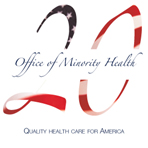|
In this article...
|
A young Mexican woman, tired of sexual abuse at the hands of her father and two older brothers, decides to cross the border into the United States, only to be raped again in the process. After that, the bottle became her trusted companion.
She is currently on the road to recovery thanks to El Centro de las Américas  , a non-profit organization located in Lincoln, Neb. which provides educational programs, guidance and support groups in Spanish for Latinos.
, a non-profit organization located in Lincoln, Neb. which provides educational programs, guidance and support groups in Spanish for Latinos.
According to María Helena Villasante, bilingual and bicultural services coordinator of the center, many of the clients have been through traumatic experiences, including physical and sexual abuse, and 99 percent of them come from families with a history of alcohol abuse.
"There's a trend among our clients to deny addiction problems, to act like nothing happened and these attitudes are passed from generation to generation," Villasante said. But, as was the case of the young woman, Villasante has seen a close connection between untreated Post-Traumatic Stress Disorder (PTSD) and substance abuse.
 Ninety-seven percent of clients seeking outpatient services at El Centro de las Américas are Mexican men and women from low-income households, and most of them are young people between 19 and 24 years old.
Ninety-seven percent of clients seeking outpatient services at El Centro de las Américas are Mexican men and women from low-income households, and most of them are young people between 19 and 24 years old.
"As they come from places where their main concern was to satisfy their basic needs, the last thing they think of is to look for counseling, so they feel ashamed and they keep it to themselves until way after it happened," Villasante said.
A report by the Office of Applied Studies (OAS) reveals that among persons aged 12 or older, Hispanics have a 10 percent rate of substance dependence or abuse. This is lower than the rate among American Indians and Alaska Natives (19 percent) but higher than Whites (9.2 percent) and African Americans (9 percent).
Mercedes Mora, clinical supervisor of the Día por Día (day by day) program of the Guadalupe Centers Inc.  , a non-profit organization dedicated to addressing the hardships and needs of the Latino community of the Westside of Kansas City, Mo., said that based on her experience she has seen changes regarding age of first use and drugs of choice among Latino men.
, a non-profit organization dedicated to addressing the hardships and needs of the Latino community of the Westside of Kansas City, Mo., said that based on her experience she has seen changes regarding age of first use and drugs of choice among Latino men.
"Latino men are starting to use drugs and alcohol at a younger age but they are coming into treatment older," she said. "What we see now, and didn't see five or ten years ago, is that on top of alcohol, they are abusing marijuana and cocaine."
Mora's observations seem backed by a 2007 Office of National Drug Control Policy (ONDCP) report [PDF, 508KB]  which shows that more than 10 percent of Hispanic 8th graders reported current illicit drug use compared to their White (8 percent) and African American (9 percent) counterparts.
which shows that more than 10 percent of Hispanic 8th graders reported current illicit drug use compared to their White (8 percent) and African American (9 percent) counterparts.
Furthermore, findings also show that Hispanic teens are using cocaine, heroin, and methamphetamines more than White or African American teens. Acculturated Hispanics are almost 13 times as likely to report using illicit substances as non-acculturated Hispanics.
Mora said she has also seen substance abuse in clients who are first-generation immigrants and feel overwhelmed by the immigration experience, which entails living by themselves with other men and sending money to their families back home.
"I have adult men here who at the very first session of the program are so upset by nostalgia and depression that they become emotional after thirty minutes," she said.
Another key issue in the process of recovery and the success of substance abuse treatment is to provide culturally and linguistically appropriate services to meet clients' needs, Mora explained. In 1991 Guadalupe Centers began looking for certified Spanish-speaking counselors, but they were hard to find.
"We had to start from scratch," Mora said. "Many of our clients are Spanish dominant, meaning they have enough English skills to get by but programs are much more effective in their primary language."
Lisa Zimmerman, mental health care program director of La Clínica del Pueblo  , a non-profit organization located in Washington, D.C., which provides free health services to the Latino community, said that trauma of war, the immigration journey, and economic pressure are the main reasons for substance abuse among their clients.
, a non-profit organization located in Washington, D.C., which provides free health services to the Latino community, said that trauma of war, the immigration journey, and economic pressure are the main reasons for substance abuse among their clients.
More than 90 percent of the people coming into La Clínica del Pueblo don't have health insurance and have incomes below the poverty line. As most clients are from South and Central America, services are provided in Spanish. Zimmerman said that they have focused on raising awareness about the need for treatment and recovery and have seen positive outcomes following the programs.
"We have done a lot of work to reduce the stigma around receiving substance abuse treatment and mental health care," she said. "We've seen that people are more willing to come forward for help."
---
Isaac Itman is a writer for OMHRC. Comments? E-mail: info@omhrc.gov
Links
National Institute on Drug Abuse (NIDA)
http://www.nida.nih.gov/
Substance Abuse and Mental Health Services Administration (SAMHSA)
http://www.samhsa.gov/
National Institute on Alcohol Abuse and Alcoholism (NIAAA)
http://www.niaaa.nih.gov/
El Centro de las Américas
http://elcentrodelasamericas.org/ 
Guadalupe Centers, Inc.
http://www.guadalupecenters.org/ 
http://www.lcdp.org/English/Home.html

Related Articles
Casa Esperanza: High Hopes in Fighting Addiction
Battling Alcohol with Awareness on Campus
Prevention through Leading, Sharing
U.S. Culture Boosts Hispanic Immigrants' Substance Abuse Risk
Statistics
Drug use and health
Illegal drug use by race/ethnicity
Treatment for addictions
Depression and alcohol use
"Hispanic Teens and Drugs"[PDF, 507KB]
 of the Office of National Drug Control Policy (ONDCP)
of the Office of National Drug Control Policy (ONDCP)Results from the 2006 National Survey on Drug Use and Health: National Findings
Prevention
Information for adolescents
Information for College students
Underage Drinking Research Initiative
Center for Substance Abuse Prevention
Get Help!
Substance Abuse Treatment Facility Locator
Mental Health Services Locator
Podcasts
Alcohol Ads Sway Teens?
Unintentional Poisoning Deaths
Alcohol, drug use and motor-vehicle crashes
Early marihuana use and gang involvement
You will need Adobe Acrobat® Reader™ to view PDF files located on this site. If you do not already have Adobe Acrobat® Reader™, you can download here for free.




 Links
Links